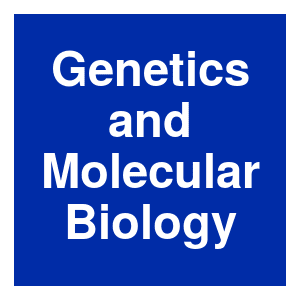Meiotic self-pairing of the Psalidodon (Characiformes, Characidae) iso-B chromosome: A successful perpetuation mechanism

|
D. Silva, C. Araya-Jaime, M. Yamashita, M. R. Vidal, C. Oliveira, F. Porto-Foresti, R. F. Artoni and F. Foresti,
Genetics and Molecular Biology,
44:e20210084.
2021.

B chromosomes are non-essential additional genomic elements present in several animal and plant species. In fishes, species of the genus Psalidodon (Characiformes, Characidae) harbor great karyotype diversity, and multiple populations carry different types of non-essential B chromosomes. This study analyzed how the dispensable supernumerary B chromosome of Psalidodon paranae behaves during meiosis to overcome checkpoints and express its own meiosis-specific genes. We visualized the synaptonemal complexes of P. paranae individuals with zero, one, or two B chromosomes using immunodetection with anti-medaka SYCP3 antibody and fluorescence in situ hybridization with a (CA)15 microsatellite probe. Our results showed that B chromosomes self-pair in cells containing only one B chromosome. In cells with two identical B chromosomes, these elements remain as separate synaptonemal complexes or close self-paired elements in the nucleus territory. Overall, we reveal that B chromosomes can escape meiotic silencing of unsynapsed chromatin through a self-pairing process, allowing expression of their own genes to facilitate regular meiosis resulting in fertile individuals. This behavior, also seen in other congeneric species, might be related to their maintenance throughout the evolutionary history of Psalidodon. More related to this: B Chromosomes – A matter of chromosome drive B Chromosomes and Sex in Animals B chromosomes in plants: escapees from the A chromosome genome? |



